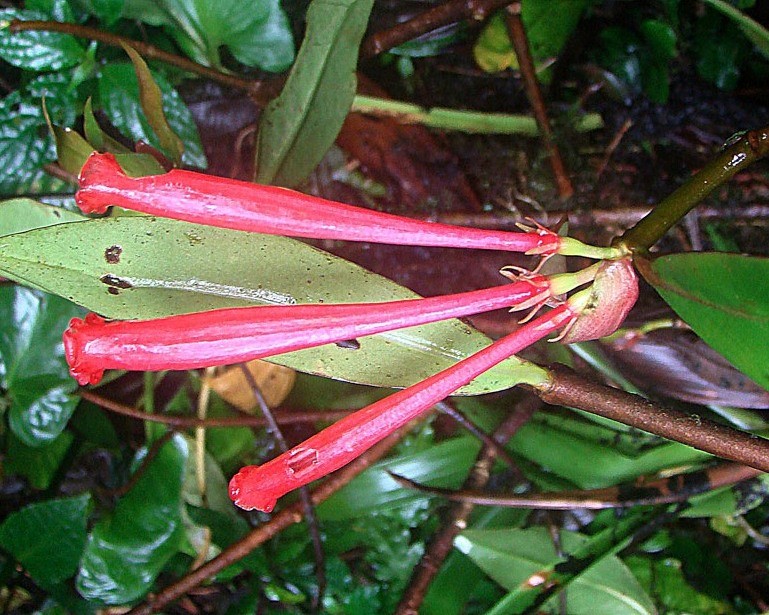Hillia triflora
(Hillia triflora)

Description
Hillia is a genus of flowering plants in the family Rubiaceae. It has 24 species. All are indigenous to tropical America. Most of the species are slightly succulent epiphytes or small trees. A few are subshrubs or lianas. Hillia rivalis is a rheophyte. The tissues of all the species contain raphides. The capsules have a beak-like appendage. Hillia triflora is cultivated as an ornamental plant. Hillia was named by Nicolaus Jacquin in 1760.It was named for the English botanist John Hill (1716-1775). Jacquin named only one species, Hillia parasitica. It has been suggested that the specific epithet as well as the generic name might well be a reference to John Hill. Some authors have placed five of the species in a separate genus, Ravnia. A cladistic analysis of morphological characters found Ravnia to be embedded within Hillia. This hypothesis has not been tested with molecular data. The genera Hillia, Balmea, and Cosmibuena form a monophyletic group. Some authors have designated this group as the tribe Hillieae, but it might be embedded within another tribe, Hamelieae.
Taxonomic tree:







